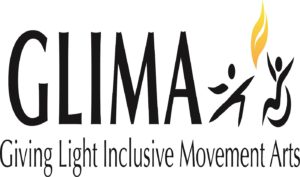5 BENEFITS OF YOGA FOR CHILDREN WITH SPECIAL NEEDS
It’s time to lie down and rest,” I say to a 5-year old student of mine with autism.
As I say that, my student gets ready to lie down and tells me where to place my weighted bean bags to help her relax. She lies there for a whole 10 minutes barely moving. I watch as her belly rises and falls as she focuses on her breathing.
In recent years, yoga has gained in popularity. Kids are now doing yoga in the community and in their schools. But for kids with special needs and autism, I’ve witnessed what an amazing difference it can make in their lives. Today, I want to share five benefits yoga has for children with special needs.
YOGA CAN REDUCE ANXIETY.
Many children with special needs and on the autism spectrum are in a constant heightened state. This is the body’s response to stress and sleep disruptions, which can be exacerbated into full-blown anxiety. This can be seen physically through their breathing. You can see them chest breathing or hyperventilating, which can worsen the anxiety symptoms. The yogic practice of breathing exercises, poses and guided imagery helps to activate the parasympathetic nervous system, an activity also known as “rest, relax and digest.”
YOGA CAN PROVIDE CONSISTENCY.
The daily practice at home and weekly sessions in a group or privately can help provide consistency and an order. In a class for children with special needs, a visual schedule is generally used to ease anxiety about class but also provide consistency. Students learn yoga sequences that are performed in the same order and open and close a class in the same order. This supports their need for consistency. However, students can expect different poses or modified sequences to challenge them as well.
YOGA CAN INCREASE SELF-AWARENESS AND IMPROVES MOTOR SKILLS.
As children practice mindful movement in various yoga poses and learn to identify body parts, they can develop a greater sense of self and their body. Practicing poses on both sides of the body, the students cross the midline. Poses such as tree, airplane (warrior 3) and seated twists can increase body awareness and develops gross motor skills.
YOGA CAN HELP WITH EMOTIONAL REGULATION.
Children with ASD can have difficulty expressing their emotions and communicating in social settings. At this time, this can be seen in unexpected outbursts or inappropriate ways of communicating. Through the combination of movement, music and breathing exercises, the brain’s emotional region is activated. This encourages children to develop emotional awareness. Also, yoga teaches children that it is okay to feel emotions both positive and negative and how to express their emotions in a healthy manner.
YOGA CAN HELP IMPROVE CONFIDENCE.
Sometimes, children with special needs have low-esteem due to being teased for not being able to move and behave like other children in school and social settings. By learning self-calming techniques through mindful breathing, movement and meditation, children are able to regulate their emotions and can become more confident in social settings. Especially in a group class, they’ll be able to learn how to work together in a safe space and learn how to interact with one another. Through movement and the development of motor skills, children grow more confident in being able to move comfortably in their bodies.



